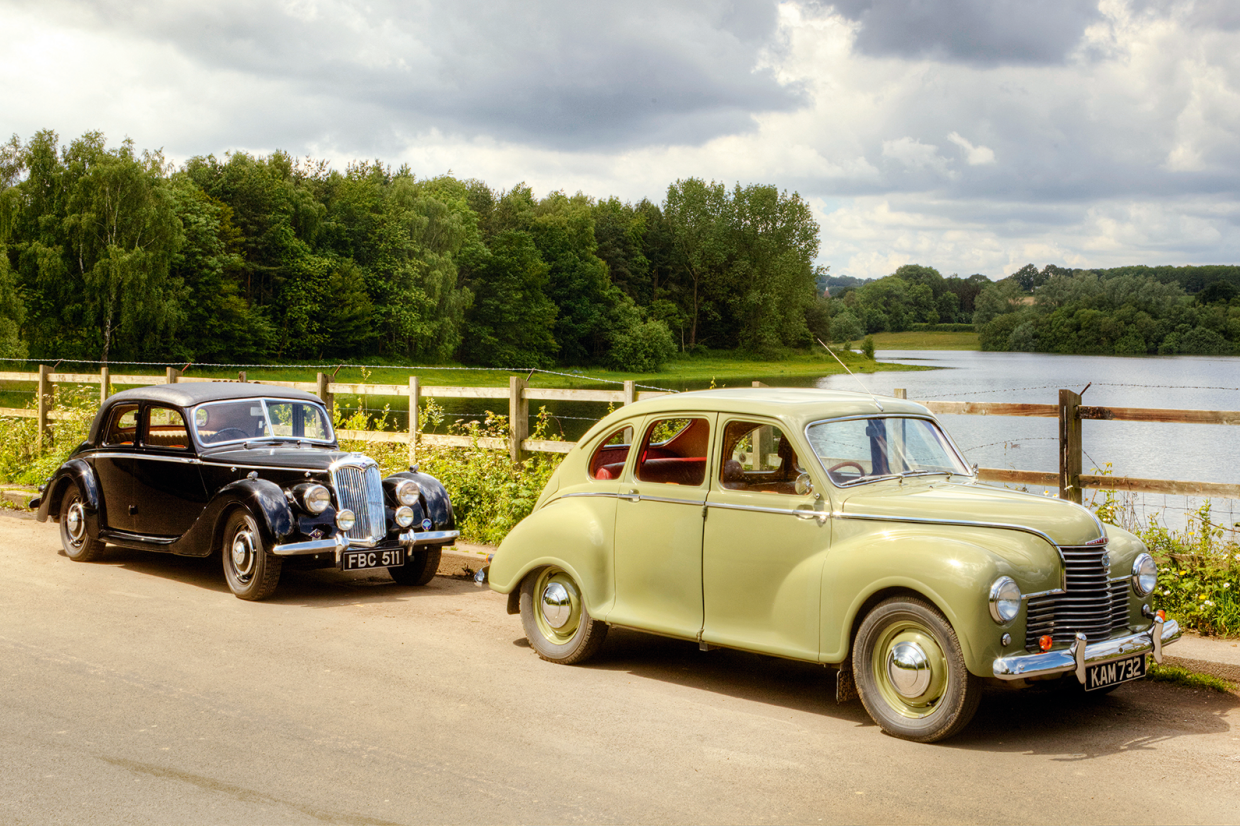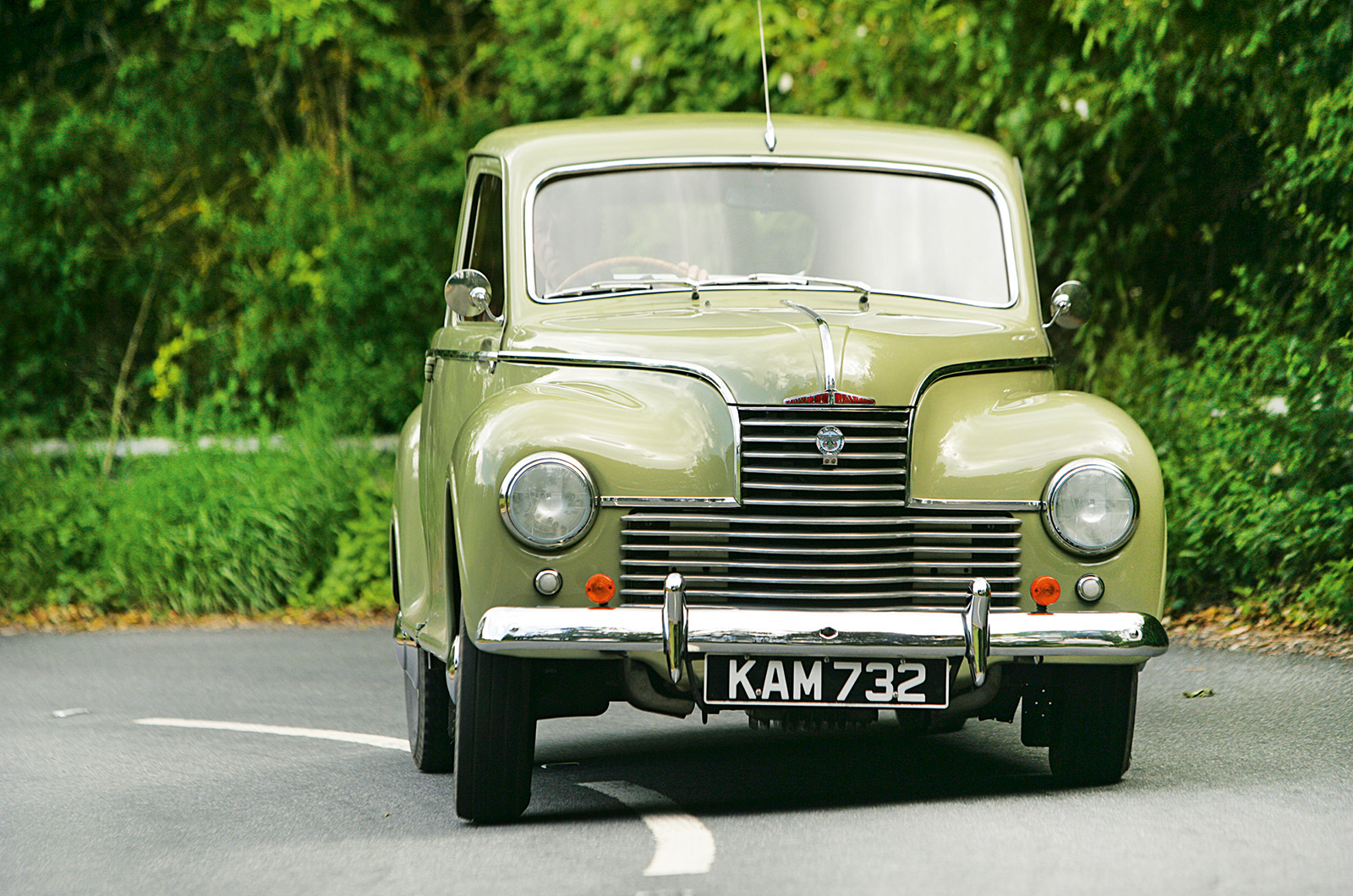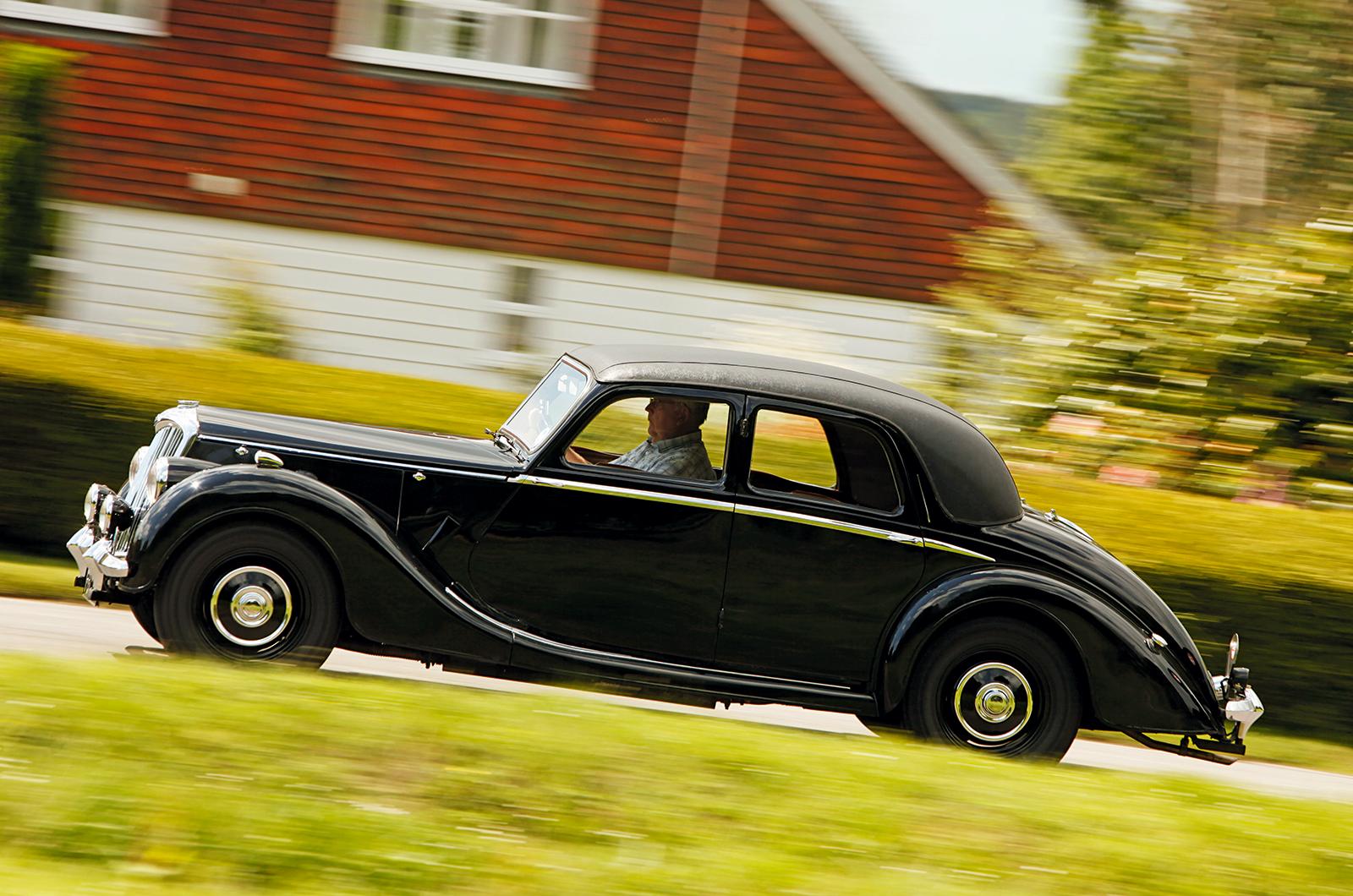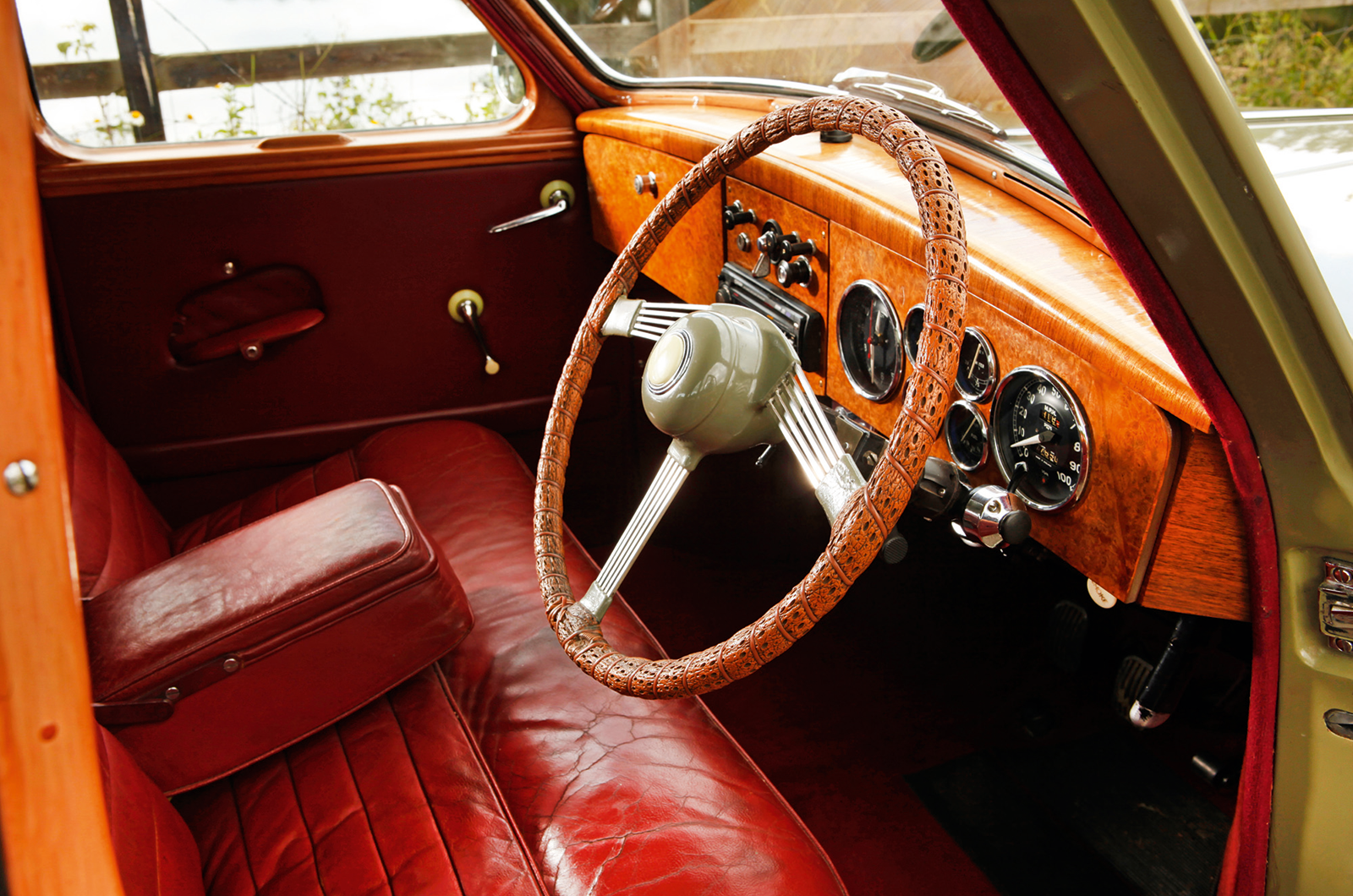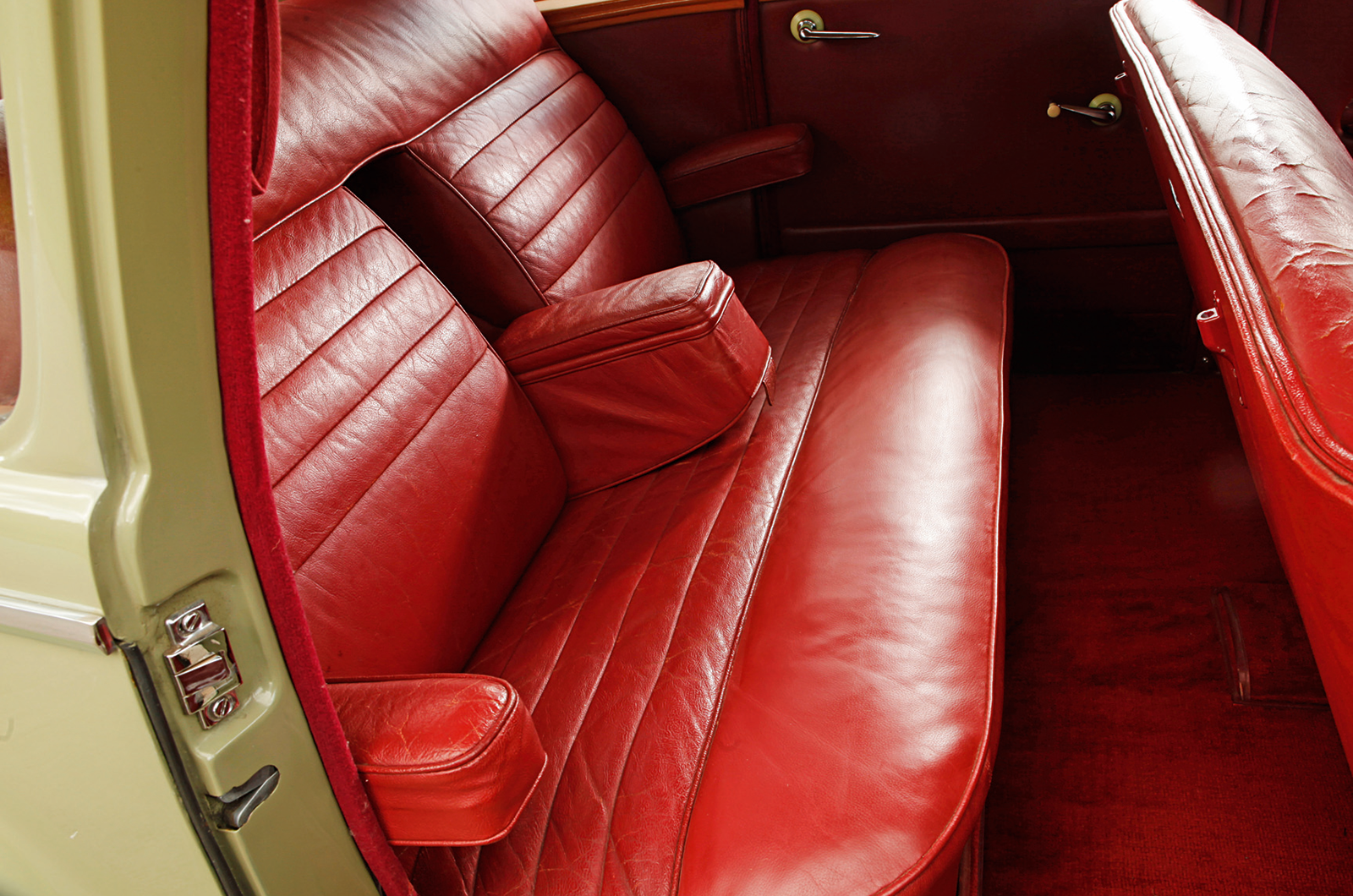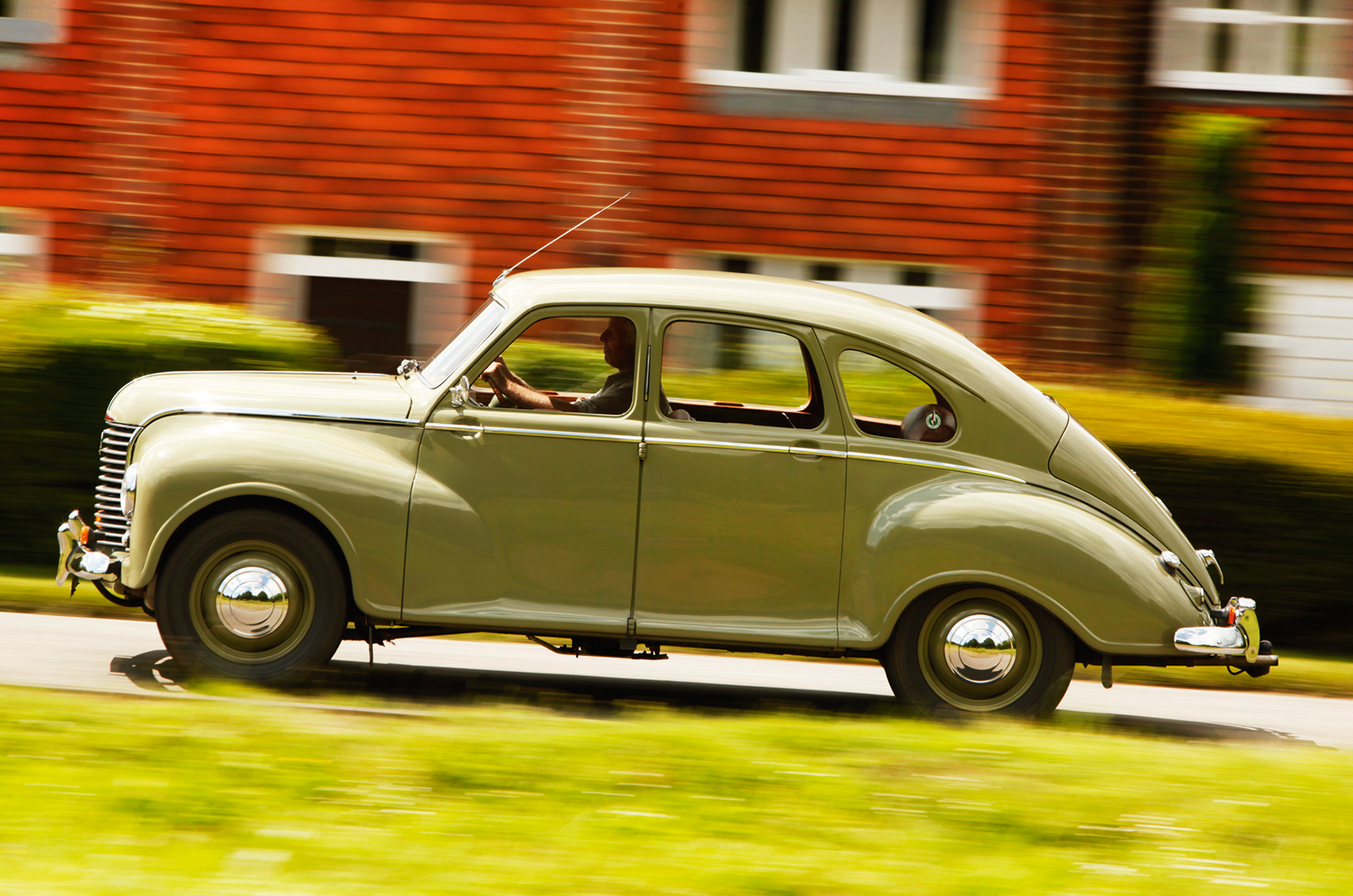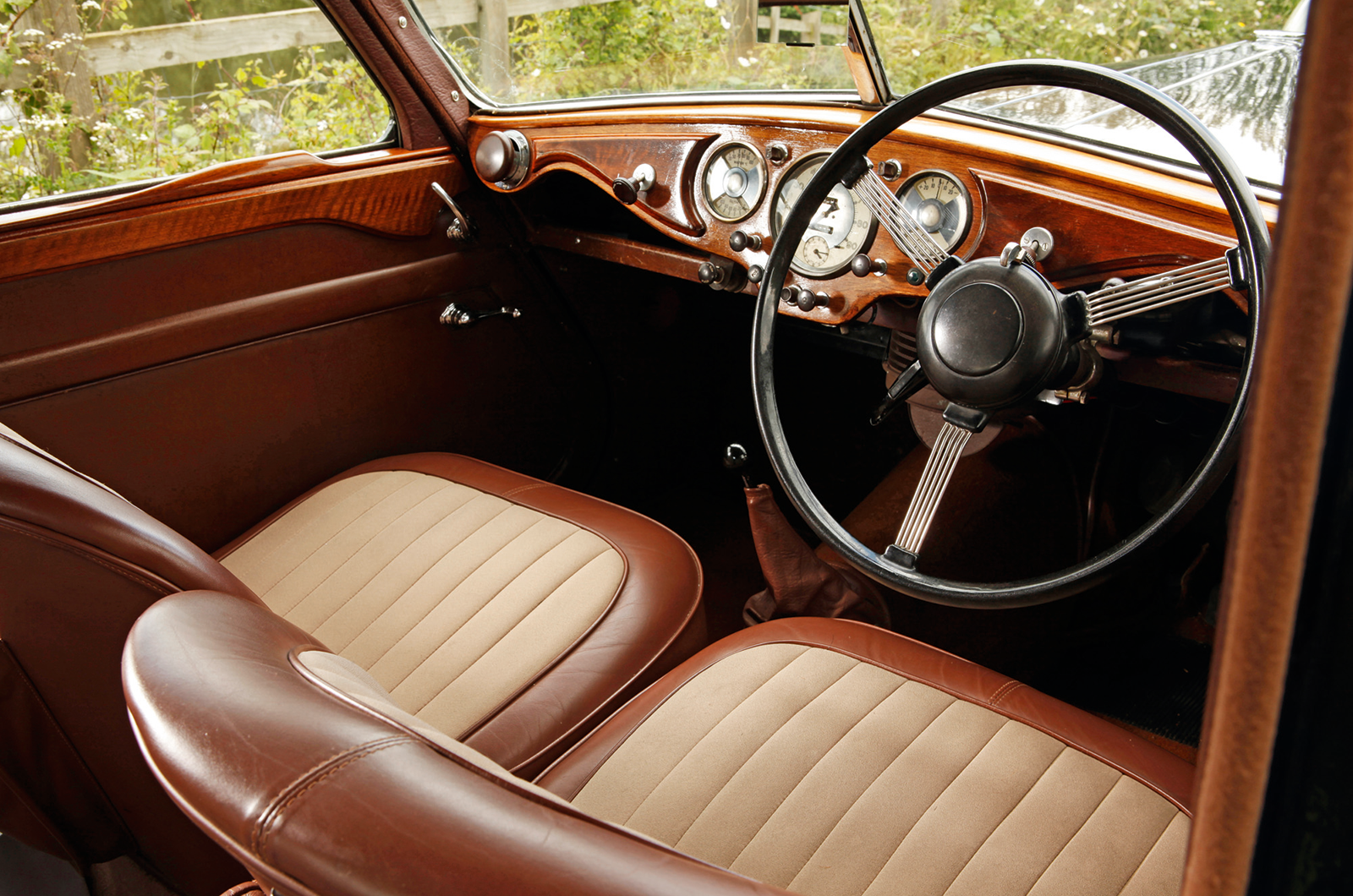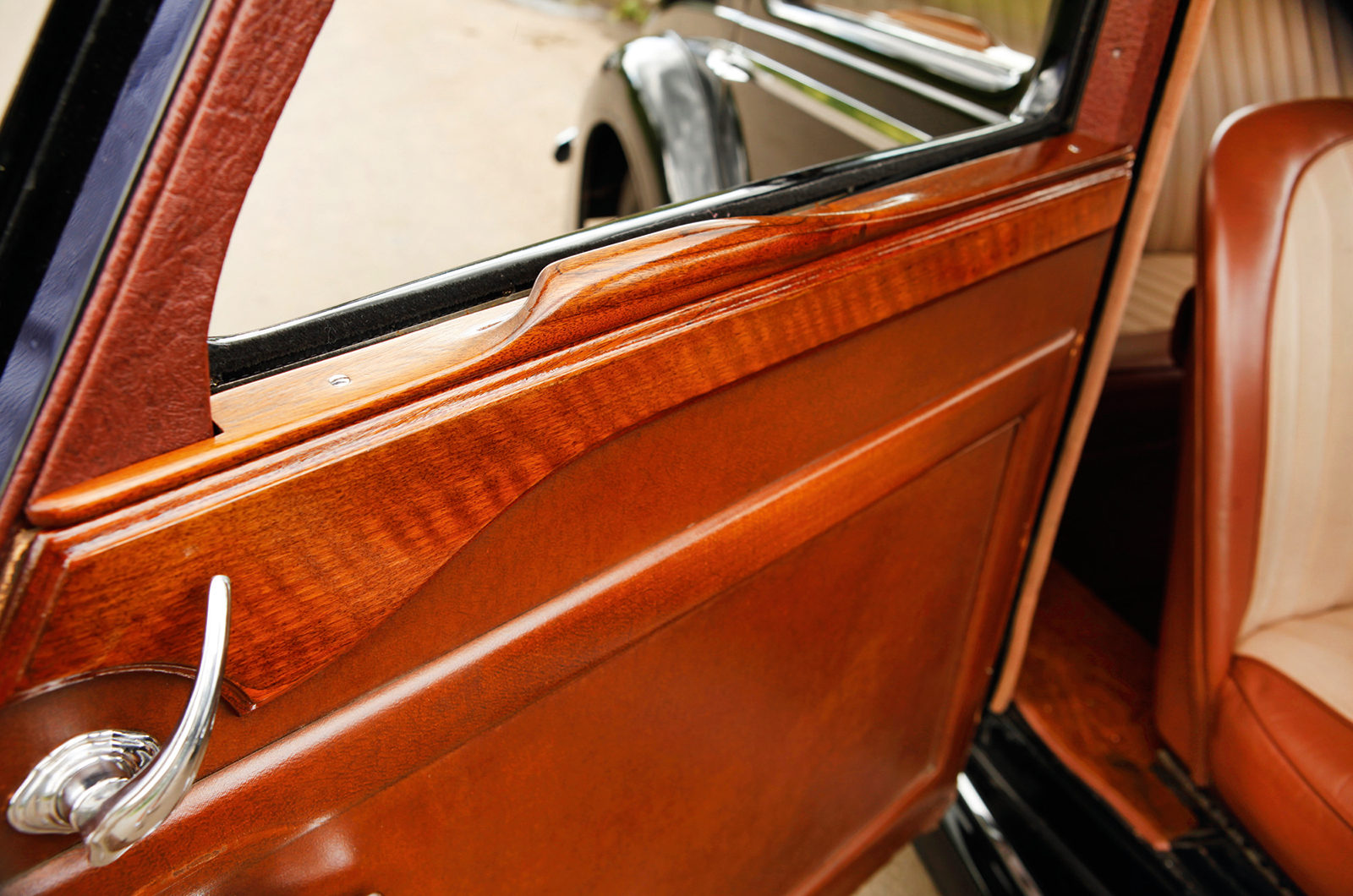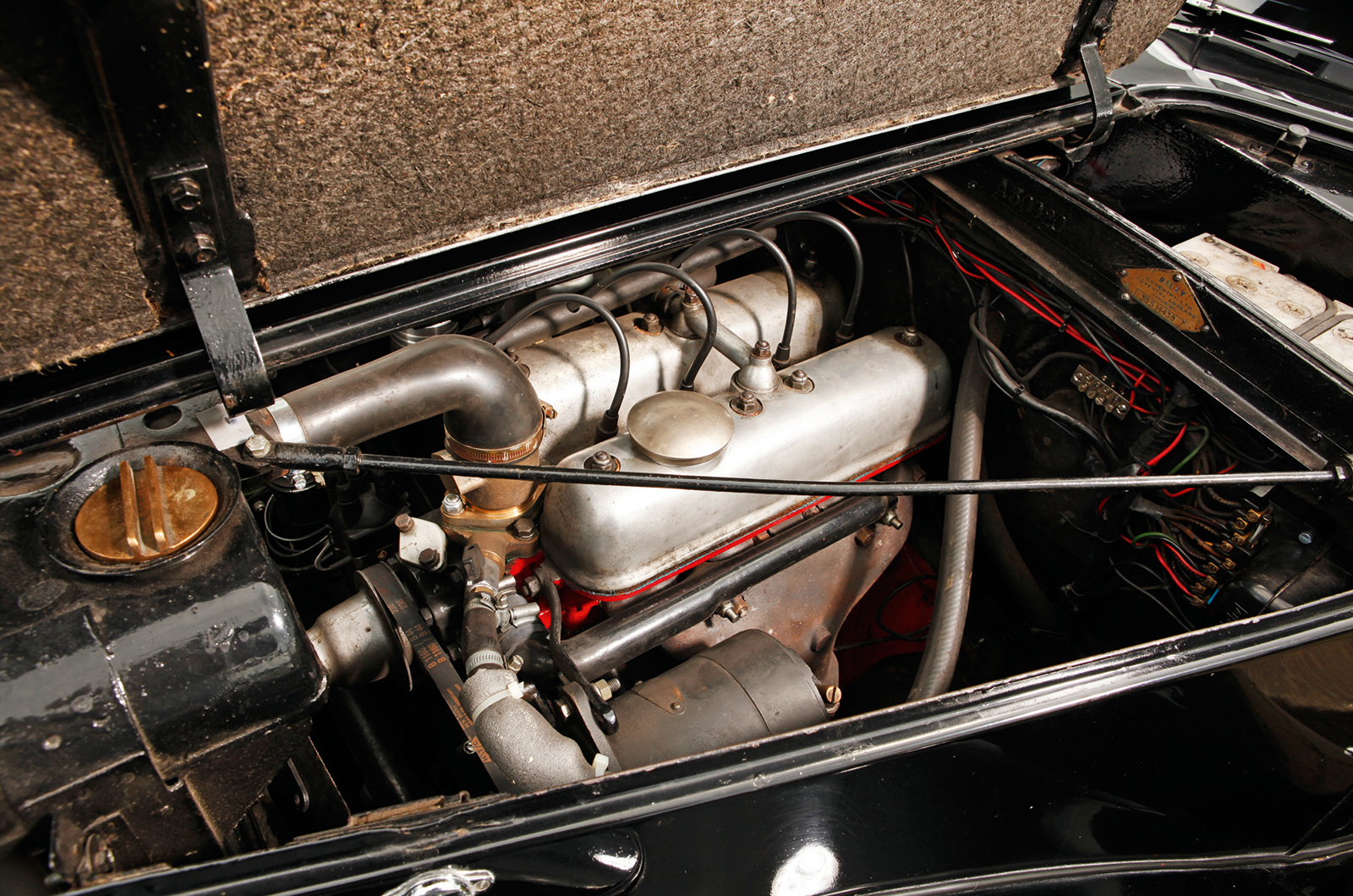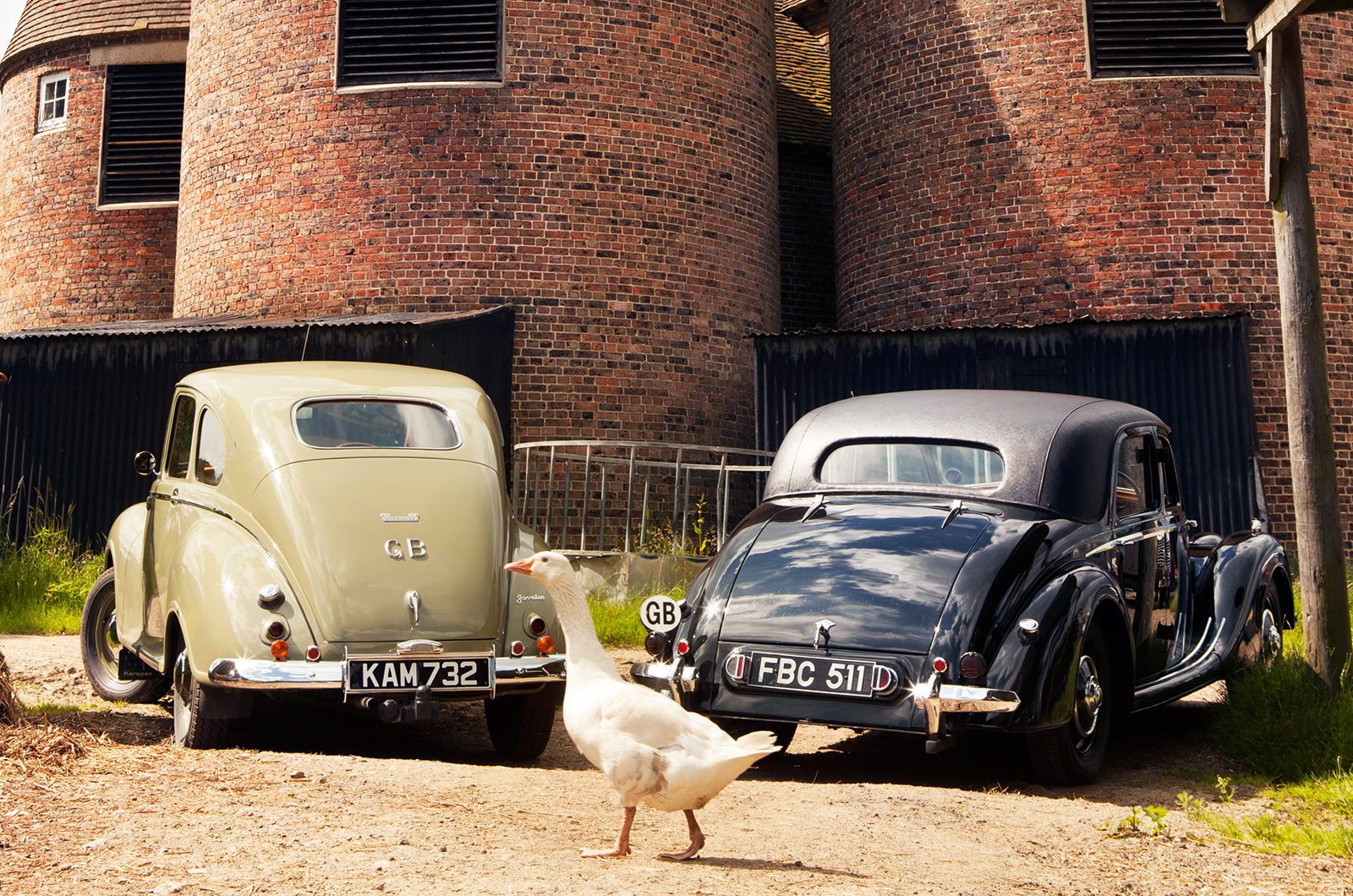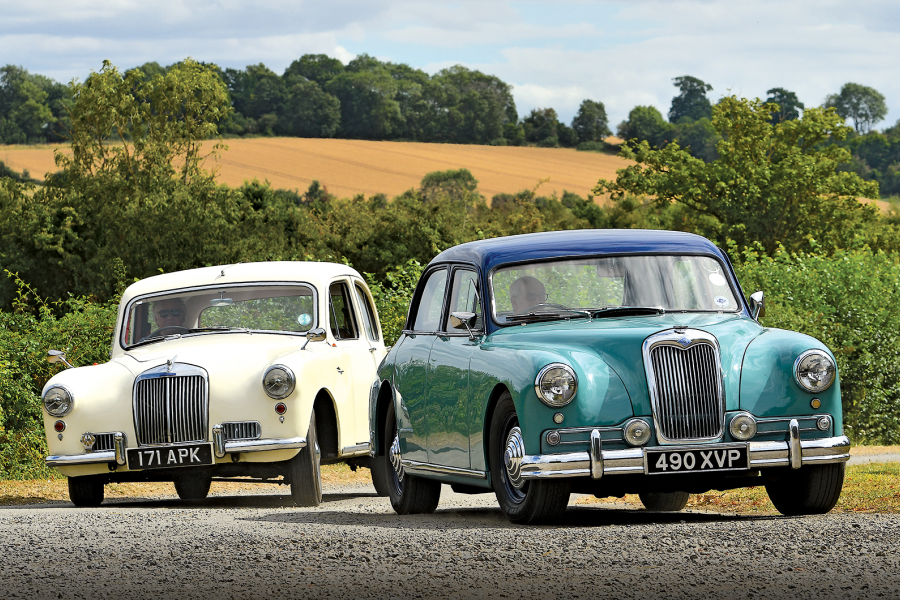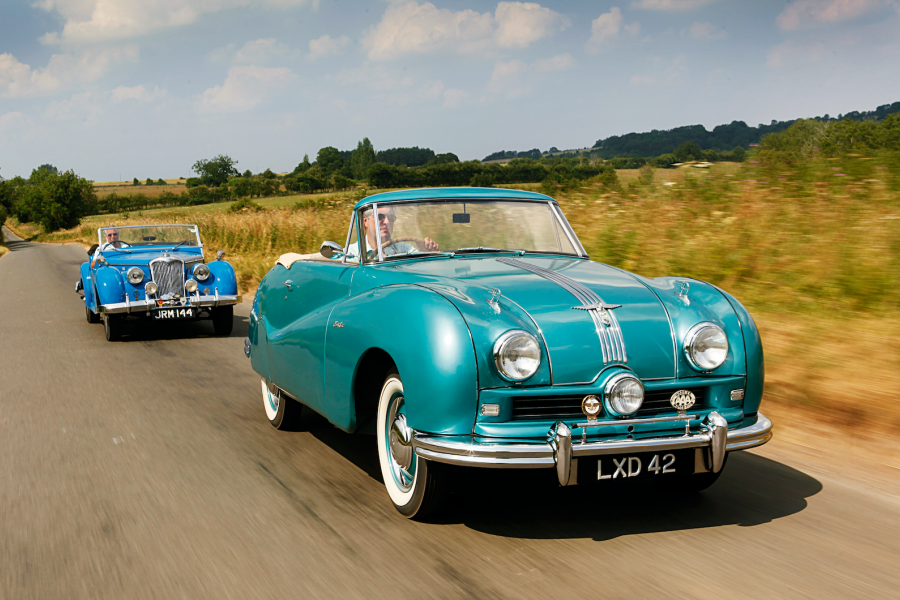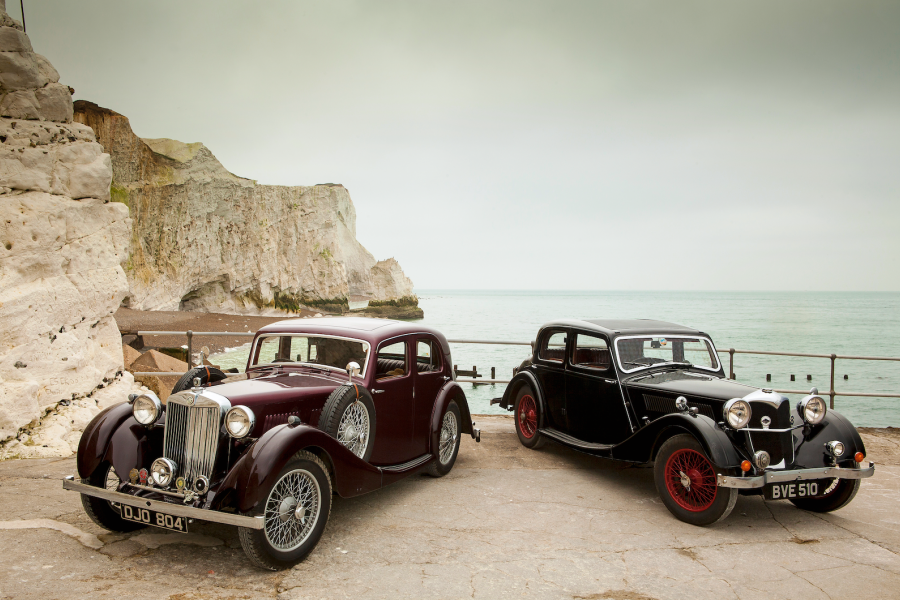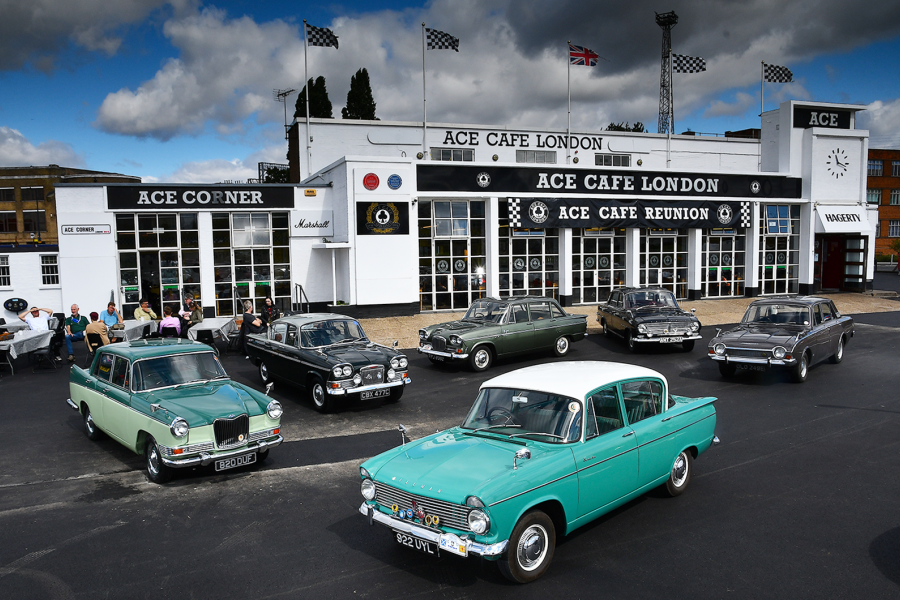This lulls you into thinking that the Javelin is more pedestrian than is the case. Use the throttle pedal, get the two Zeniths working, and you dig into reserves of power.
The car really does accelerate – it picks up its skirts in a way that the Riley, more leaden in its responses, is unlikely to achieve.
The reasons for this aren’t hard to fathom. As well as having superior aerodynamics, the Javelin is the lighter by 20%.
Helping the Jowett’s progress is an easy and tight-gated gearchange – one of the best column shifts this side of the Channel – and a pleasantly smooth clutch.
You can snick third, but otherwise the synchromesh is effective enough. It is on the low-geared side, however, yet there’s still quite a gap between third and fourth.
Fortunately, that overdrive really does make a difference: cruising becomes so much more relaxed with it engaged. Its chassis comportment is equally rewarding.
The steering, made a touch more fluid by the ball-race Roxburgh has fitted at the top of the kingpins in place of a plain phosphor-bronze bearing, is taut and in no way demandingly heavy.
The Riley RMA’s all-iron engine has twin high-set camshafts and short pushrods
The hydraulic brakes with that servo are efficient and short-travel, and the suspension comfortable.
The Jowett leans into bends, and feels underdamped, but corners undramatically and with accuracy, while poor surfaces don’t disturb the structure. The RM is a car of firm inputs; the Jowett can be driven more gently.
Viewed from the perspective of the time, the Riley has one foot in the present and one in the past. With its separate chassis, coachbuilt body and heavy, expensive-to-make engine, it represents a technical dead end.
The Javelin has one foot in the present and one in the future. With unitary construction, sophisticated suspension and a modern (if expensive) engine, it could have been rebodied in a more up-to-date idiom and been technologically contemporary through the ’60s.
Imagine it with a little more power, a floor gearchange, disc front brakes, and firmed-up suspension: it could have been a British Alfasud.
For just these reasons, both cars have real appeal.
But had I been a discriminating enthusiast in the early ’50s I might well have been tempted – fingers crossed about reliability – to go for that brave, tragic Jowett streamliner, the only genuinely advanced British saloon before BMC’s Mini and 1100.
Images: Tony Baker
Thanks to: Jowett Car Club; The Riley RM Club
This was first in our February 2013 magazine; all information was correct at the date of original publication
Factfiles
Jowett Javelin
- Sold/number built 1948-’53/23,307 (inc CKD kits)
- Construction steel unitary
- Engine alloy-crankcase, iron-heads, ohv 1486cc flat-four, twin Zenith carbs
- Max power 52.5bhp @ 4100rpm
- Max torque 76lb ft @ 2600rpm
- Transmission four-speed manual, RWD
- Suspension: front independent, by torsion bars rear live axle, trailing links, Panhard rod
- Steering quadrant and pinion
- Brakes hydro-mech drums (hydraulic from ’52)
- Length 14ft (4267mm)
- Width 5ft 1in (1549mm)
- Height 5ft 2½in (1588mm)
- Wheelbase 8ft 6in (2591mm)
- Weight 2280lb (1034kg)
- Mpg 32
- 0-60mph 22.2 secs
- Top speed 80mph
- Price new £1168
Riley RMA
- Sold/number built 1945-’52/10,504 (+3446 RMEs to ’55)
- Construction steel chassis, timber frame, steel panels
- Engine all-iron, double ‘high-cam’, ohv 1496cc ‘four’, single SU carburettor
- Max power 55bhp @ 4500rpm
- Max torque 76lb ft @ 3000rpm
- Transmission four-speed manual, RWD
- Suspension: front independent, by torsion bars rear live axle, leaf springs, torque tube
- Steering rack and pinion
- Brakes hydro-mechanical drums
- Length 14ft 11in (4547mm)
- Width 5ft 3½in (1613mm)
- Height 4ft 11in (1500mm)
- Wheelbase 9ft 4½in (2858mm)
- Weight 2716lb (1232kg)
- Mpg 26
- 0-60mph 25.1 secs
- Top speed 74.3mph
- Price new £1168
Enjoy more of the world’s best classic car content every month when you subscribe to C&SC – get our latest deals here
READ MORE
Quality street: Riley One-Point-Five vs Lancia Appia
Going with the flow: Lancia Aprilia vs Jowett Javelin
Buyer’s guide: Jowett Javelin
Jon Pressnell
Jon Pressnell is a contributor to Classic & Sports Car
